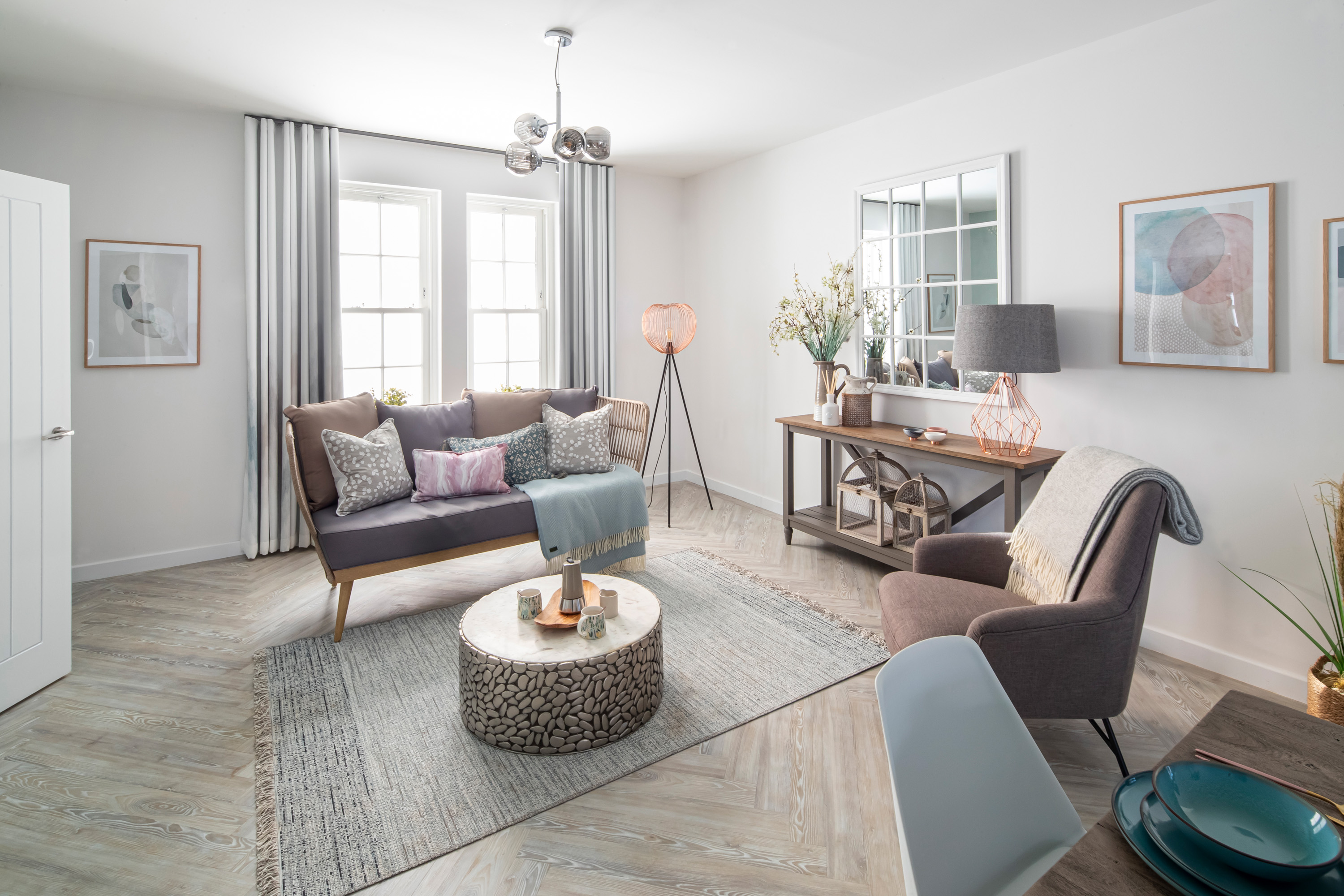How to make small spaces feel bigger

There’s a size hierarchy in any home, where public rooms tend to be the largest apartments, and downstairs WCs or utility rooms are typically the smallest. Bedroom four will always be smaller than the master suite, since the latter is designed to accommodate two adults whereas the former may be occupied only by a workstation, or a cot and a nursing chair. Kitchens require more cabinets than utilities, and a study doesn’t have to house the three-piece suites synonymous with lounges.
Whichever home you live in, or plan to buy, some rooms will inevitably be smaller than others. However, ingenious lighting, furnishings and décor can make even a dressing area feel spacious. Here’s how to make the most of smaller apartments – including recognising that space itself is cubic…
Build upwards
We tend to think of rooms in terms of their floor area, but this ignores the space above freestanding furniture. Full-height units, built-in wardrobes and captain’s beds all exploit head-height airspace, with high-level storage ideal for occasional-use items. Tall furniture accentuates a sense of spaciousness, drawing your eyes upwards, as do shelving units.
Avoid heavy furnishings
Tall furniture is great, but dark materials will exacerbate a room’s diminutive dimensions. Avoid walnut or mahogany in favour of ash and oak. Glass and acrylic are even better, since you can see through to whatever lies beyond. Floating shelves avoid the solid sides of a bookcase, and furniture with legs has a more open feel than items extending to the ground.
Deploy clever lighting
A 40-watt pendant lightbulb will create dark shadows and an uninviting ambience, reducing any sense of airiness. Conversely, two well-spaced ceiling spotlights will banish the gloom by overlapping. Motion-sensitive skirting-level LEDs distract from limited dimensions, adding a focal point while making it easier to see where you’re going. On a related note…
Maximise natural brightness
People often overlook the way natural daylight accentuates airiness. Don’t fit heavy blinds like wooden shutters; stick to fabric options which won’t block the glass even when open. Floating cotton blinds are a great option, independently moving up and down to block direct sunshine or add privacy at ground level without obscuring the whole window.
Choose light colours
A home office may look lovely in panelled teak, but dark materials absorb light. Pale surfaces reflect it, so stick to creams and whites. Gently undulating wallpaper patterns extending along adjacent walls engender a sense of space, and vertical stripes exaggerate ceiling heights. Pale curtains are also essential, while drapes and pelmets are synonymous with bigger apartments.
Minimise clutter
Paraphernalia across a desk suggests a lack of space, as will mounds of laundry piled up on a bed. Conversely, tidy surfaces imply an apartment is big enough to handle its duties. File paperwork away as it arrives, keep the ironing pile under control and buy a heated clothes rail to expedite drying. Add small-item storage trays to drawers, so every object has a home.
Add mirrors
Few objects enhance a sense of roominess as effectively as mirrors. Hang them opposite a window to bounce brightness around, or opposite a door to imply the far wall is further away than it is as you walk in. Tall mirrors draw the eye upwards, though two or more could be overkill in a small room. Position lamps opposite mirrors to double their illumination.
Back to Latest Posts




